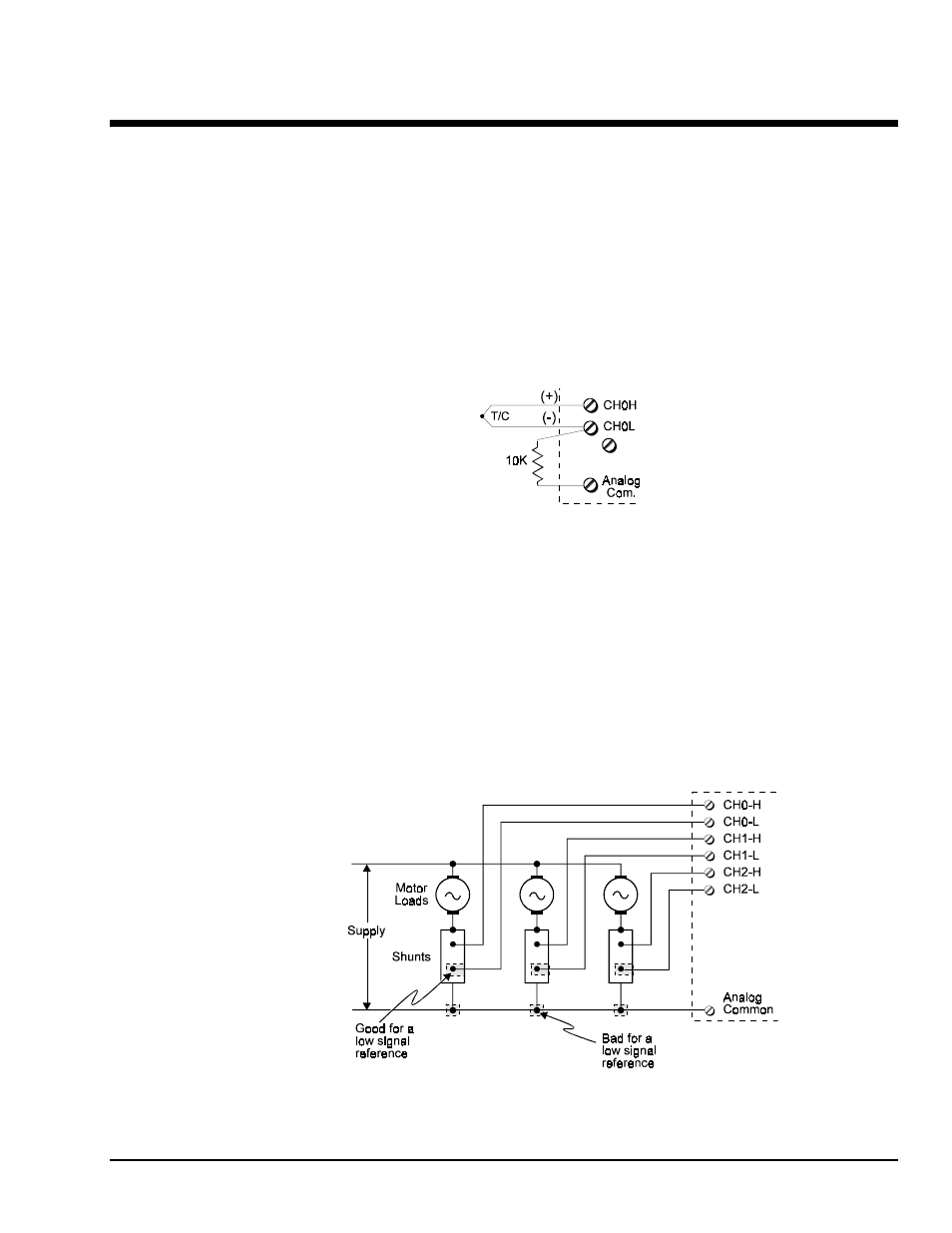Appendix - differential measurement configurations, Floating differential, Referenced differential – Measurement Computing TempBook rev.3.0 User Manual
Page 165: Appendix, Differential measurement configurations

Differential Measurement Configurations
Appendix
TempBook User’s Manual
Appendix A-1
Floating Differential
Floating differential measurements are generally made when low-level signals must be measured in the
presence of relatively high levels of common mode noise. The most common example would be a non-
grounded thermocouple. When the signal source has no direct connection to the system analog common,
one must be provided. The easiest way to do this on the TempBook is to use the built-in biasing resistors
by closing the corresponding input channel DIP switches (S1 and S2 on the termination card as described in
chapter 2). As an alternative, a resistor can be connected between one of the two signal lines (usually the
lower in potential) and common. A resistor of 10 K
Ω to 100 KΩ is satisfactory (less noise with the lower
values).
Floating Differential Configuration
Referenced Differential
Referenced differential measurement is used when measuring several voltages. However, the voltages
cannot share the same common node as a group of single-ended measurements might. An example is to
measure several currents via shunts which happen to share a common supply terminal along a bus. The
weakness in a single-ended hookup is that current flow through the common bus can introduce substantial
errors that can be indistinguishable from the real values measured. The need for the system common to be
connected to the common supply terminal is shown in the figure.
Referenced Differential Configuration
